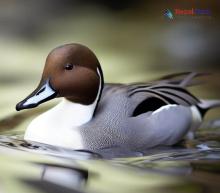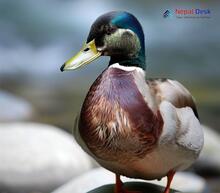Nepal, a country known for its breathtaking natural landscapes, is also home to a diverse array of bird species. Among them is the fascinating bird genus Anas, which consists of ducks, geese, and swans. Here, we will delve into the world of these magnificent birds and explore their unique qualities and habitats in Nepal.
An Overview of the Anas Genus
Belonging to the family Anatidae, the genus Anas encompasses around 40 different species, varying in size, shape, color, and behavior. Ducks in this genus are commonly referred to as dabbling ducks due to their unique feeding habits. They don’t dive under the water like other ducks; instead, they feed on the surface by skimming through vegetation with their beaks. Anas species can be found in various habitats such as wetlands, lakes, rivers, and marshes.
Spotting Anas Species in Nepal
Nepal's diverse ecosystems provide an ideal environment for many Anas species to thrive. Among them are the Northern Pintail (Anas acuta), Eurasian Wigeon (Anas penelope), Common Teal (Anas crecca), and Mallard (Anas platyrhynchos).
As a popular birdwatching destination, Nepal boasts numerous prime locations to observe these elegant birds. Some of the top spots include Koshi Tappu Wildlife Reserve, Chitwan National Park, Phewa Lake in Pokhara, and Begnas Lake. Visiting these places during migration season (October-March) significantly increases your chances of spotting various Anas species.
Conservation Efforts in Nepal
The Nepalese government and non-governmental organizations have taken several steps to conserve these enchanting birds. Efforts include preserving natural habitats such as wetlands, promoting ecotourism, and implementing anti-poaching measures. Additionally, the government invests in research to monitor species populations and better understand their ecology.
Tips for Successful Anas Birdwatching in Nepal
To enhance your birdwatching experience while observing Anas species in Nepal, consider the following tips:
- Plan your visit during migration season (October-March) for the best chances of seeing these birds
- Bring a pair of quality binoculars for closer observation
- Wear muted colors and comfortable clothing that blends with the environment to avoid alarming the birds
- Be respectful of the wildlife by keeping a safe distance and not interfering with their natural behavior
- Hire a local birdwatching guide or join organized tours for an informative and successful experience.
In conclusion, Nepal's rich biodiversity offers nature lovers an unparalleled opportunity to observe the captivating Anas genus in its natural habitat. By engaging in responsible birdwatching practices and supporting local conservation efforts, you can play your part in preserving these beautiful avian wonders for future generations to enjoy.




